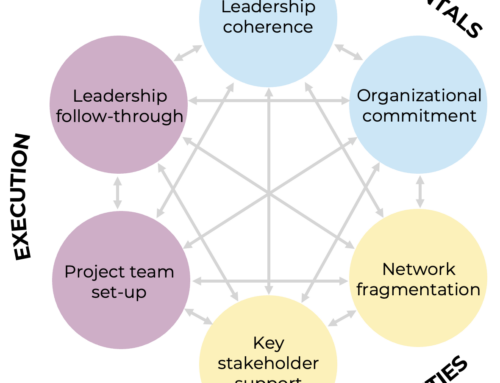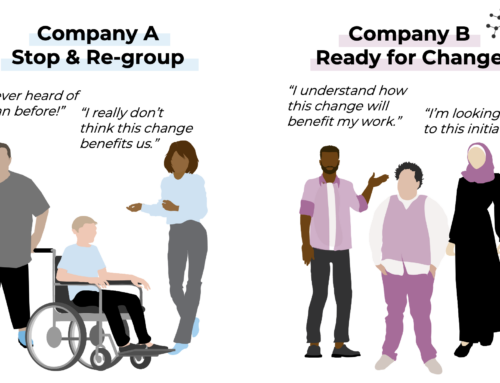
Why Organizational Network Analysis is a MUST-KNOW Tool for Leaders
Organizational Network Analysis is a tool any organizational leader aiming to be successful must know. No matter where the focus is. Organizational development, collaboration, knowledge management, change management or internal communication.
You must know it!
In this short post, I will introduce the WHY, WHAT and HOW of Organizational Network Analysis.
Why Use Organizational Network Analysis?
Organizational Network Analysis brings hard evidence to soft – but critical – organizational ingredients, such as decision flows, knowledge sharing, collaboration, informal influence and communication. Its core strength is that it uses intuitive visualizations of hard data to eliminate organizational gut feelings in decision making.

It is especially valuable as a tool in knowledge intensive organisations, where leaders need to navigate complex dilemmas daily. To explore the validity of gut-feelings and to restrain unconscious biases for taking over.
What is Organizational Network Analysis?
Network analysis has been around as a tool since the 1930’ies, but it is only recently it took off as an approach to analyzing organizations.
Initially driven by academia thrilled by curiosity and the intuitive nature of the visualizations when presenting a problem – e.g. to make the climate debate more comprehendible, to understand the agile structures of terrorist networks or as from the late 1990’ies to grasp the complexities of organizations.
Lately, driven by specialized companies (such as Innovisor ?), which use Organizational Network Analysis to generate organizational insights to accelerate and improve the quality of organizational changes
How Can Organizational Network Analysis Help?
Organizational Network Analysis helps understand the importance of critical connections and flows in organizations, and thus aids those leaders aware of the importance of vibrant communities and networks to be much more targeted and effective in the actions the employ.
Organizational Network Analysis allows the leader to target points where connectivity needs to be decreased as well as increased, and then identify exactly the individuals that needs to know each other to bridge organizational silos. It also allows leaders to discover how bottlenecks and friction can be eliminated, and agility be achieved.
The possibilities are substantial and the use cases are many, such as:
- Knowledge & Community Management
- Innovation
- Digital Transformation
- Organizational development and restructuring
- Collaboration Optimization (aka Silo Busting)
- Internal Communication
- Change management
What Will the Future Bring for Organizational Network Analysis?
Some reports suggest that 70% of leading companies will pilot use of it in 2018. Management Gurus like Josh Bersin predict that Organizational Network Analysis will take off as an organizational leadership tool.
While you can never predict the future, you can be certain that the increased interest in Organizational Network Analysis and the widespread availability of use-cases will change its use fast.
There will certainly be discussions re Data Privacy, Data Sources, and Business Ethics and vendors that will take short cuts in what they deliver. (Check this article – Don’t get fooled by ONA!).
However, the advantages of Organizational Network Analysis outnumber the disadvantages by far. A global break-through for Organizational Network Analysis has started, and I am excited to follow the development closely.







